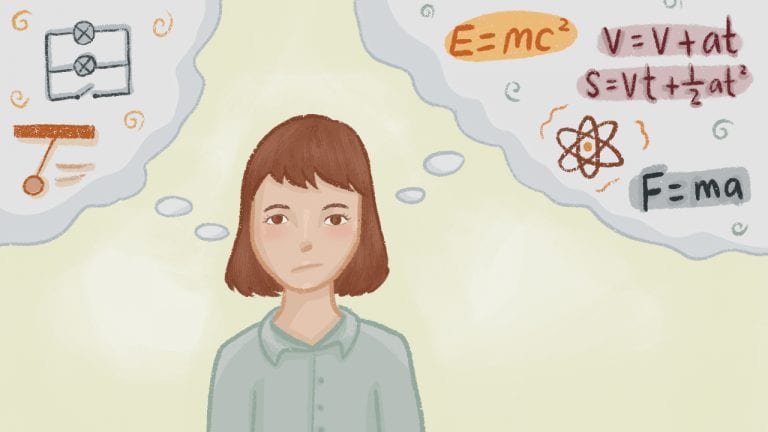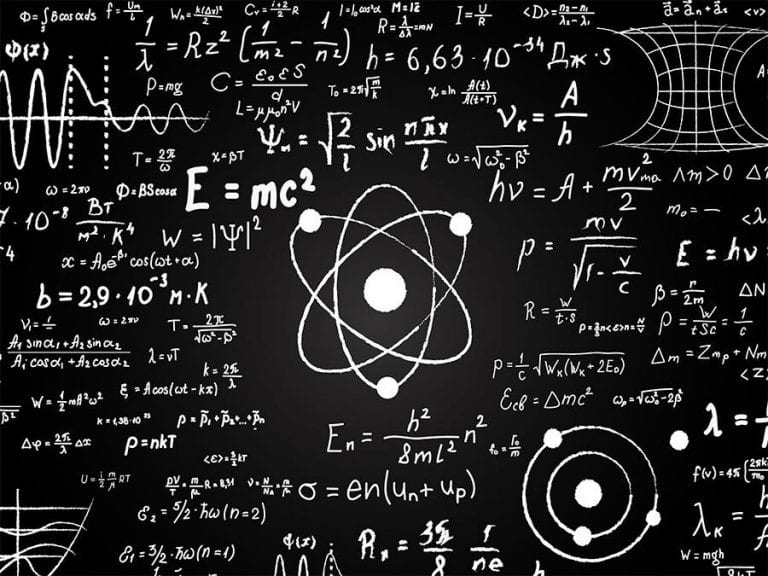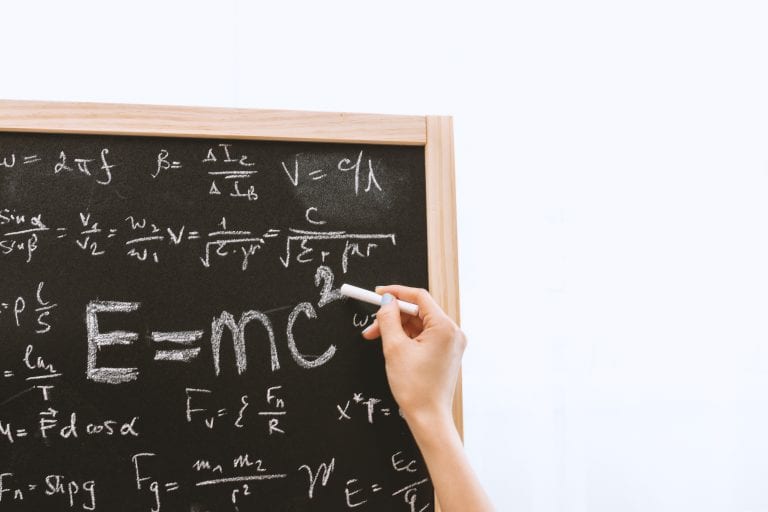
Tips to Better Understand Physics Equations

Physics can be a terrifying subject to deal with, especially if you have delved deep enough into its higher branches that you start to encounter and involve numerous new and unfamiliar variables within each equation.
However, there are ways to overcome these complex and mind-boggling equations which can be done by almost anyone as long as they have the willpower to do so. A few steps can be taken for you to slowly progress yourself towards understanding and solving different equations in physics.

What is Physics?
Physics, by definition, is the branch of science concerned with the nature and properties of matter and energy. The subject matter of physics includes several branches which include: Mechanics, Thermodynamics, Vibrations and Wave Phenomena, Optics and Light, Electromagnetism, Relativity, and Quantum Physics.
Each of these branches hold numerous other unique equations which range from the well-known E=mc2 to the not so famous dU = δQ-δW. The latter of which expresses the relationship between the thermodynamic potential (U), heat (U), and work (W).
However, we are not here to discuss each equation individually to understand them. Instead, we are going to discuss certain ways and procedures which can help us see the bigger picture and start to see physics equations not as individual enigmas which we have no power against, but as a group of affiliated equations which may have more or less variables than the equation next to it or a family of sister equations which all stem from the same equation.
4 Tips to Understand Equations Quickly
Equation Manipulation
First, you need to go back to the basics: equation manipulation. Remember how the humble equation for speed (S= d/t) can be altered and manipulated to suit the situation? One can manipulate this equation to become d= (S)(t) if the situation calls for you to solve the distance travelled by an object given its speed and the time it took to travel.

Source: Pinterest
This goes for any other equation which includes at least 3 variables, which is the majority of the equations found in physics. By familiarizing and obtaining mastery of the manipulation of different equations, you can memorize one 4 variable equation and still be able to solve 3 other problems related to the equation you have memorized.
This saves you time and energy as you only need to familiarize and drill one main equation which can be manipulated to derive other equations related to it, so long as the variables present within each individual manipulated equation are consistent with the original equation where they were derived from.
Understanding the Equation to a Variable Level
Now that you have saved time from memorizing different equation by learning and mastering the art of manipulation, we can then move to the next step which is familiarizing and understanding each and every individual variable within the equation.
Because you have saved time by only memorizing one main equation and then deriving different equations to suit your needs from it, you can then dedicate that extra time to understanding each variable’s role within the equation.
You must understand how that variable may affect the outcome or result of the equation and how each variable relates to other variables within the equation.
For example, if you are calculating the velocity of an object dropped from a certain height in a planet which has an average acceleration due to gravity of -5.6 m/s then you can expect the value of the variable g in the equation of a free falling object (v = u +gt) to be different as the hypothetical situation occurred in another planet with a different acceleration due to gravity.
This would also yield a different answer to the same hypothetical problem which occurred in the planet Earth. By understanding the function of each individual variable within an equation, you can avoid confusion about new and unfamiliar variables thrown at you during exams which serve the same purpose as the variables which you have been familiar with.

It also helps to understand how each variable within an equation may affect other variables in the same equation as well. For instance, in the equation v2 – vo2 = 2as, if the acceleration of the object is 0 then we can infer that the variables affected by the variable a, which is the initial and final velocity (vo and v respectively) will be identical due to the fact that the object is not accelerating which suggests that its initial and final velocity remain the same all throughout the time it was observed.
By familiarizing the different ways, a variable can affect other variables within the equation, you can save yourself the time and energy needed to rid yourself of the confusion you are entranced with while you encounter a difficult problem.

Take a Break
After you have learned to manipulate equations to suit the situation presented to you and after you have successfully understood the each and every individual variable and the relationship it has with other variables within the equation, and you still seem to have difficulties with a problem or equation, it is time to move to the next step: take a break.
Taking a breather for about 10 minutes after 50 minutes of studying otherwise known as the 50-minute rule can help ease and relieve sore back muscles, replenish your energy, re-instil focus, and prevent burnout from studying. However, this is not the only reason for doing so.
Let’s say that you have been pondering for a certain period of time upon a really confusing problem which seems like it can be easily solved if you only had remembered that procedure discussed to you a few weeks ago. This would be the ideal time to take a break and let your brain function and do its job.
Even while taking a break, your unconscious brain tries to recall and remember things which may help with the task you did. This is also the reason the recurring phenomena of remembering the name of the person you met at the bus stop only after you have left the bus and is about to go home. This is your unconscious brain trying its best to recall long term memories and transferring them to your conscious brain to aid in problems you have encountered.
After taking a break, you will be delighted to find out that the problem seems to be more familiar to you and will no longer be that threatening, given that you have already been trying your hardest to solve the problem you have put off. Because there is no point in leaving an unsolved problem you do not understand for a few minutes and expect to magically come up with the procedure to solve it on your own.
After taking a break, your brain will have left the nitty-gritty of the little details of the problem and you can start to see the bigger picture. You can begin to assess the problem in a new light and will start to notice fundamental flaws or errors in the equation you used or the trick within the trick question which made it difficult to comprehend and solve.
In order for this to work, you must have a fundamental understanding of the equation used to solve the problem. No matter how long you leave the problem unattended, it will have no effect on the outcome of your break and you will still have difficulties solving the problem so long as you have yet to fully comprehend the equation needed to solve the problem.
This technique is often used by some chess grandmasters that prefer to look at other contestants’ tables during crucial points of the game to take a break from the strategy they are using and to get a more visible sense on what their opponents are planning. Taking a break once in a while can also benefit other areas of study as well, such as essay writing, taking quizzes, and note taking.
Rehearse and Repeat
Just like any other craft, practice makes progress. This holds true for studying equations as well as practice and persistence often lead to a better score during exams when it comes to physics. It takes more than familiarizing a few equations and understanding each variable to become better at physics.
By repeatedly answering physics problems with varying difficulties, you can drill the basic skills of problem solving in physics into your brain and will become long term memory. Long term memory cannot be easily forgotten and thus will give you a better chance of remembering similar problems you have encountered during studying and incorporate the procedures to the problem you are currently solving.

Form a Study Group or Ask a Professional
Source: Pinterest
A study group is a collection of individuals simultaneously studying either different or similar subjects and helping each other by answering queries from other members of a study group.
A study group of 2 to 3 people can really boost your productivity as each individual can focus on a certain topic and equation, master it, and then share it with other members of the study group. By doing so, the members essentially split the strenuous task of understanding a topic from scratch and have more time processing the explanations given to them by their study buddies during discussions.
However, if the manpower of 2 to 3 individuals plus the internet still fails to give a clear and understandable explanation to a certain topic or equation, then it would be wise to seek the help of professional.
A teacher, professor, or engineer would most likely be willing to answer your questions and help you understand what it is you are having difficulties with as long as you ask them politely and as long as they themselves know how to solve the problem or equation.
Still looking to Improve? We're here to assist!
Don’t have a study group or have trouble approaching teachers?
But what if you have trouble approaching teachers or you are simply too shy to ask your friends for help? Fear not for we are here to help!
Here at FamilyTutors, as leading home tuition in Singapore offer online tutoring courses for all ages ranging from primary school to diploma & university-level courses to suit the needs of every student. We also offer a variety of subjects including several different languages ranging from English to Hindi, Science, Math, Chemistry, Biology, and of course, Physics.
By supplementing your studies with a home tutor from the thousands of highly skilled and experienced home tutors of FamilyTutor in Singapore, you can improve your understanding of the different branches of physics and the equations and theories that come with them.

Carelle
Carelle is a teacher who has been through the ups and downs of the teacher and learner life. She wishes for every learner to gain educational satisfaction that will help embody the people they want to be in the future.
Tell Carelle Below What You Think About Her Post!

About FamilyTutor!
FamilyTutor is an established home tuition agency in Singapore! We match suitable home tutors for our clients not just to improve the students' academic grades, but also to build a strong rapport and meaningful relationship with the students and even the their whole family. FamilyTutor put every student in good hands!
If you need an excellent home tutor, feel free to call/WhatsApp us at +65 8777-2168! Our matching service is free!
Related Posts!
Follow Us On Facebook!
Education Levels
National Exams
Math & Science Subjects
Language Subjects
Japanese Tuition
Korean Tuition
German Tuition
Humanities Subjects
Social Studies
Chinese Literature Tuition
About Us
FamilyTutor is an established and the people’s favourite home tuition agency in Singapore! We match a suitable tutor for you not just to improve the student’s grade, but also to build a good rapport and meaningful relationship with the student and even with the student’s whole family! With FamilyTutor, every Singaporean son & daughter is in good hands.
Contact Us
- 8777 2168
- 8777 2168
- Mon-Sun 9am-10pm (Including PH)
- contactus@familytutor.sg
- 17 Petir Road Singapore 678278



